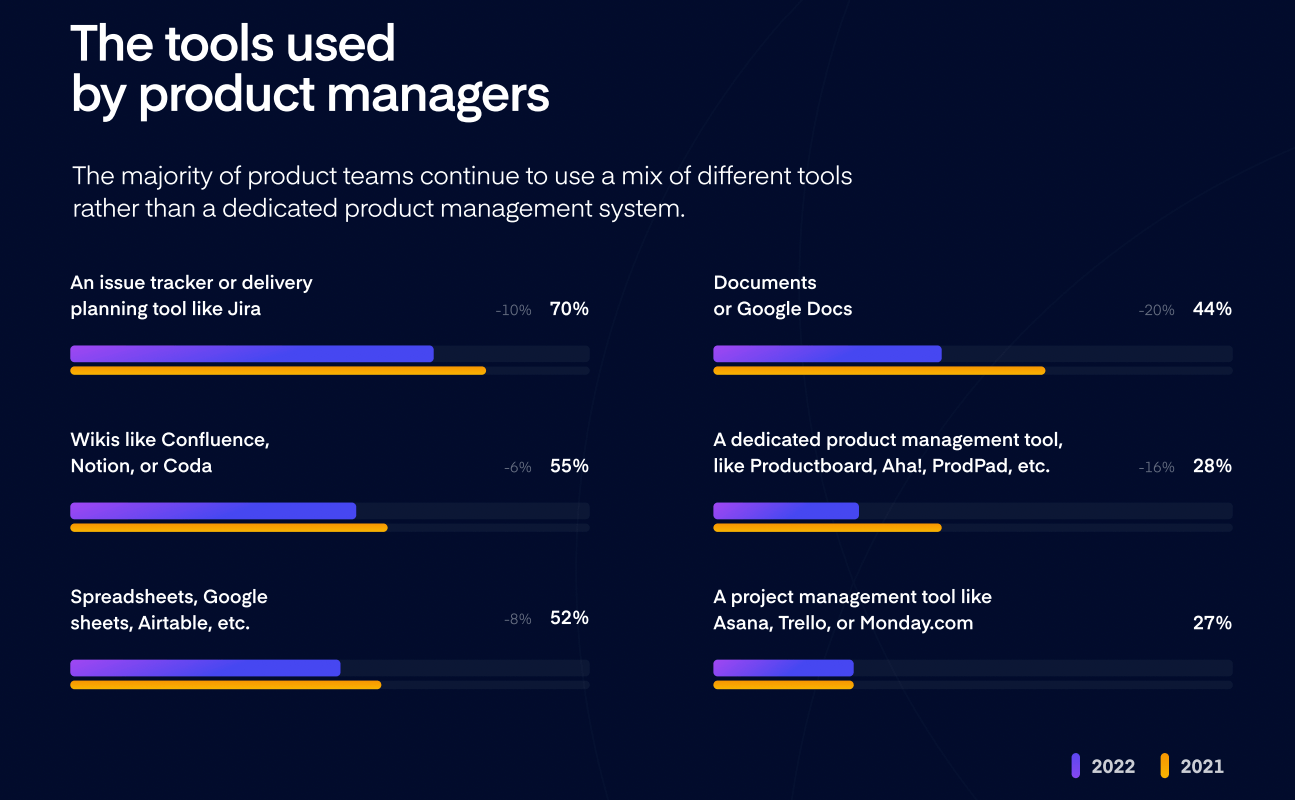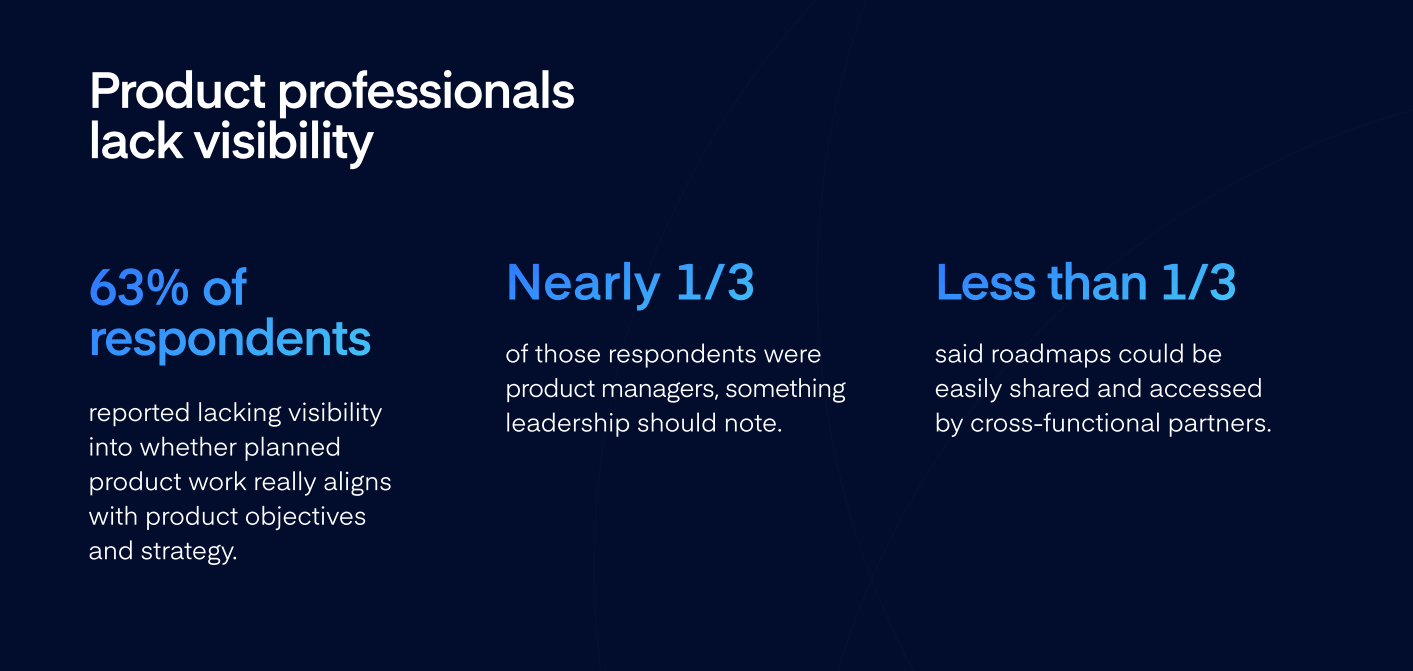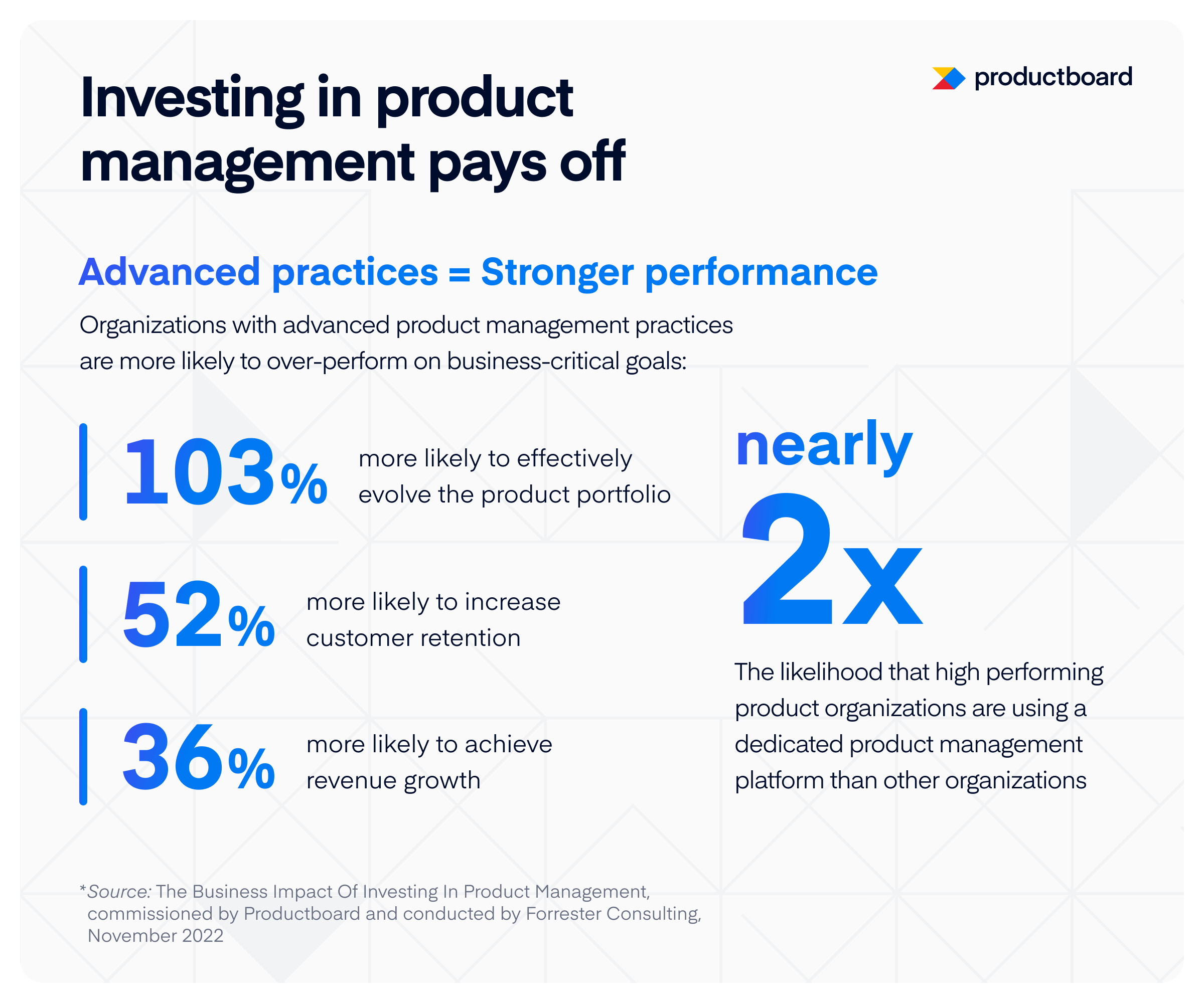How to Upgrade Your Product Strategy and Tech Stack

In an increasingly uncertain macroeconomic environment, it’s easy to look at your budget and start cutting out everything you think is extraneous – what software do you really need and what’s just nice to have?
While it might seem like a more efficient choice to use a multi-tasking software across your teams – it’s good enough, it gets enough things done – it’s ultimately not what an ambitious product team needs, especially in a more turbulent atmosphere. While it might seem counterintuitive, now is the time to invest in purpose-built product management software.
A dedicated product management platform will set you and your team up for success in a time when it’s critically important to be placing the smartest product bets possible, using limited resources. After all, organizations with advanced product management practices are 36% more likely to achieve revenue growth, according to a new study Productboard recently commissioned Forrester Consulting to conduct.
What are the different types of systems product teams use?
Product professionals have a few different categories of systems they can choose from to build workflows for their teams:
- All-purpose tools, like spreadsheets or presentation software
- Project management software
- Point solutions (these address one or two specific pain points within product management)
- Product management software
While most people are comfortable using all-purpose tools like spreadsheets and presentation software, using these for a product workflow comes with a lot of drawbacks. Each team has to create their process from scratch and train any new team members on it, for example. That’s a very manual process that leads to an obvious risk of lost work or process when established team members leave. They aren’t automatically updated, creating even more manual work for product team members. These solutions also have limited integrations with other existing workflows, especially cross-functionally.
Project management tools might seem like an affordable step up from spreadsheets or presentations and they do offer a few advantages like seamless collaboration across teams and built-in access controls. However, these still have a lack of prioritization frameworks, no embedded product management best practices, and customer feedback and data remains disconnected from product roadmaps.
Point solutions are just that: they address one or two specific pain points product teams encounter in their workflows, without addressing the entire ecosystem needed for success. Customer data and feedback still need to be stored in a separate solution and these tools have limited scale and no enterprise-ready access control.
So while your team might be saving money in the short term with any of these options, you’re building technical debt and looking at a lot of lost time in the long term. As your team grows, these options do not scale. They lack the flexibility and complexity necessary to succeed as a sophisticated product organization.
The current state of product management – and product management tools
One of the key takeaways in our 2022 Product Excellence Report was that product organizations still lack purpose-built toolkits to ply their trade, resulting in fragmented workflows and greater difficulty aligning across multiple stakeholders.

From the 2022 Product Excellence Report
This makes it more difficult for product teams to establish a single source of truth in terms of their workflows; the noted exception in our data was cross-functional work with engineering in Jira. We dug a little further to see if those who did report using a dedicated product management system saw a positive impact on roadmap confidence – particularly roadmap visibility across teams.
We found that it does. Respondents using a dedicated product management system said they were much less likely to cite issues in product roadmap accessibility, sharing, and providing stakeholder context, among other critical aspects of their roles.

From the 2022 Product Excellence Report
This was particularly notable as one of our other key findings in the report highlighted waning confidence in product roadmaps year over year. Roadmaps are an essential, strategic communication tool for driving direction and intention inside of an organization, and managing expectations both inside and outside of an organization. Product leaders should take this as an urgent call to action to equip their teams with the resources they need, particularly in light of the current environment.
The risks of a tech stack that isn’t specific to product management
We don’t have to tell any product professional that the pressure is increasing on their teams to produce business-critical work, often with fewer resources. Productboard recently commissioned Forrester Consulting to conduct a new study, The Business Impact Of Investing In Product Management, which found that while product management has increased responsibility in driving business outcomes, the investment in those teams doesn’t always match the expectations placed on them. Just like the Product Excellence Report, the 2022 Forrester Consulting study found that product teams aren’t using purpose-built product management systems.
Enterprise teams often find themselves relying on a convoluted mix of documents, spreadsheets, SQL queries in data lakes, and anything else their current team and predecessors have cobbled together over the years. Some of it might integrate, some might not — at least without expensive upgrades across multiple tools. In all, it might work, but it’s definitely not efficient; these teams could find immense value in a comprehensive system.
Smaller teams can find just as much value in a comprehensive system; the ability to glean deep user insights, create clearer prioritization of features and products, enable easier access to roadmaps for the product team and key stakeholders, and more.
“The product management organization is using disparate tools to perform their work. When asked about the tools and technologies they use to do their jobs, respondents indicated that their time is fragmented across a variety of tools that may or may not interoperate.”
-2022 Forrester Consulting Study
We’ve already touched on some of the risks associated with operating a product team through tools that aren’t built for it – no single source of truth for the team to work from (not to mention cross-functional colleagues), a lack of alignment, and a lack of team efficiency. There’s also business risk; particularly in a turbulent time marked by layovers and team changes, it’s critical that product knowledge is accessible not only to the full product team – present and future – but to key cross-functional teams and stakeholders as well.
There’s inconsistent decision-making and prioritization from leaders with the inability to effectively understand not just what certain capabilities are, but why they are being prioritized for discovery or as solutions to the problems or needs of customers. (You don’t want to become a cautionary tale of the fabled statistic that “slightly more than half of the features shipped from roadmaps are seldom or never used by customers.”)
There’s also the issue of customer feedback and how it’s being collected, annotated, shared, and ultimately utilized. If every team is collecting user feedback in separate spreadsheets or other tools without the ability to easily compile, filter and update it, it’s much more likely that feedback simply remains in the void. Customers are more likely to get frustrated, and that can increase churn when customer retention is most important.
So the risks seem clear, especially in the current environment: a less efficient product team isn’t going to be a highly effective one, and that lessening impact will be felt all the more when the pressure is on. It’s worth investing in product management teams, including the resources they need to perform as expected.

How this investment in product management tooling looks in practice
Research might not be enough for even the most seasoned product leader to convince the stakeholders ultimately in charge of their (probably increasingly tightened) budgets to invest in a dedicated product management platform. So we wanted to share some real world stories of Productboard customers who made the investment in a purpose-built product marketing tech stack and the impact that decision made on their business.
Zapier
An excess of customer feedback was the issue Zapier faced before Productboard. Data poured in, but they had no central place or standard process to maximize its potential as teams scaled rapidly. Learn more about how Productboard aligned the team around real-time roadmaps and gave everyone a single source of truth to work from in their story.
Salesforce
Productboard helps Salesforce reduce risk, improve efficiency, and save time. Obviously you can never completely eliminate risk, but you can make smart, data-driven decisions that improve team efficiency, ultimately saving everyone time. Learn more about how they did it with Productboard, in their story.
TomTom
TomTom‘s story is a fascinating one – their HR department uses Productboard to drive teams to function more like a product management organization — focusing on cross-functional visibility and collaboration, ruthless prioritization, and customer-centric decision-making.
Ultimately the decision to invest in Productboard led to this transformation: they moved from 11 independent and disconnected team roadmaps to one comprehensive, global HR roadmap.
Final thoughts
A comprehensive product management system can act as a forcing function for Product Excellence. In Productboard, the boards themselves represent a sound product practice and habits any successful product team should be following: understanding needs, implementing an effective strategy and a clear and aligned plan around how to bring value to both the customer and the business.
Download the product tech stack mini guide to better understand (and fix) your tech stack’s limitations – so you can 10x your product team.
Ultimately, your team needs to build the tech stack that makes the most sense for the work you’re doing and the resources you have in place to support that work. Investing in a product management platform can help scale your processes, drive customer engagement, and ultimately drive business impact.
Pick one that integrates with the tools you’re already using, especially cross-functionally. Let us know if Productboard might be that missing piece for you and your team.




![The CPO’s Blueprint for Annual Planning: An Opportunity to Drive Change [Part 3]](https://www.productboard.com/wp-content/uploads/2024/11/strategy-blueprint-560x293.png)
